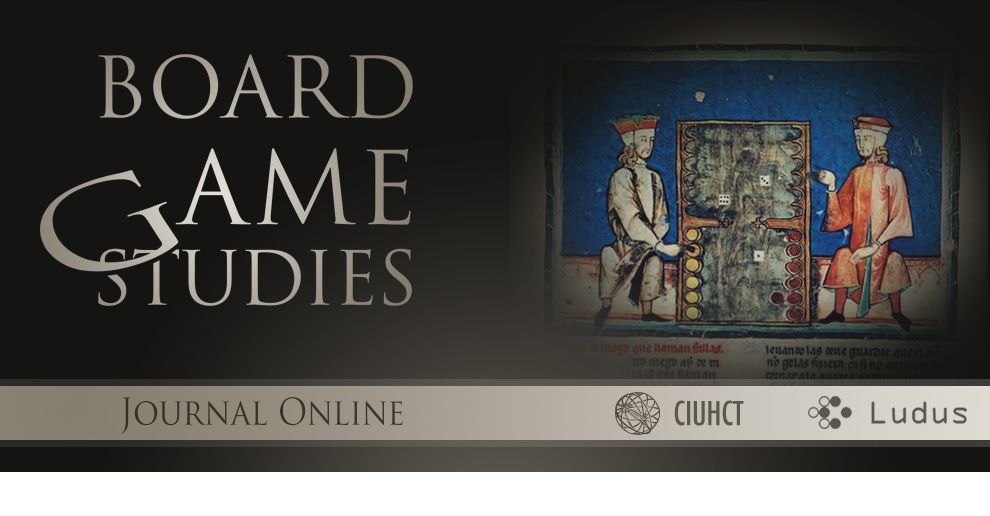
Article Details
 Version for online viewing
Version for online viewing
 Version for printing
Version for printing
| Title |
| The role of the dice in board games history |
| Authors |
| Alex de Voogt, Nathan Epstein, Rachel Sherman-Presser |
| Abstract |
When looking at variations in games, the board and the playing pieces provide evidence, but so do the number of dice that are part of play. It is shown that the number of dice being used not only affects the game but that the definition of the values for each throw have significant and game-altering implications. All variations under scrutiny in this study do not appear as radically different games physically or perceptually. It illustrates a situation in which significant changes in strategy and playing length due to changes in randomizing instruments did not necessitate changes in the overall board or the number of playing pieces. In other words, players in history may have experimented with randomizing devices and may have used varying sets of them without any visible repercussion on the remainder of the board game implements. In the history of board games it is shown that games may have varying board sizes and number of playing pieces while at the same time different games may be played on the same board, even using the same playing imple- ments (Finkel, 2004, p. 54) Sch ̈adler (1998). Such variation that is found with board games complicates our understanding of their development in his- tory. The attestation of a game board is not sufficient to rule out a set of different games being played on that same board, while variations of board de- sign do not necessarily point at different playing communities (Finkel, 2004, p. 54). In order to understand the historical development of board games it is necessary to document what set of rules, boards and playing instruments were present at a particular point in time. Changes in observable variations can then be traced over time and across geographical regions to map the his- torical development and distribution of board games de Voogt, A.J., A.-E. Dunn-Vaturi & J.W. Eerkens (2013), (Murray, 1952, p. 133). This is an ongoing effort in archaeology but even descriptions of contemporary board games allow us to understand what variations are common within a players’ community. In the following study, we analyze a set of games, which have minor vari- ations in board size and number of playing pieces as well as known variations of randomizing implements, in this case cowries and cubic dice. The role of randomizing devices in the history and distribution of board games is not yet informed by a better understanding on how such implements affect a game. For this we looked at both the implications for strategy and playing time, the latter expressed as the average number of moves necessary to complete (part of) a game. While the results of this study do not seem to facilitate conclusions when different types and numbers of dice are attested, they do confirm that players are not bound by these implements and that dice variation should be consid- ered common rather than an unusual phenomenon that requires historical explanation. |
| Keywords |
| Dice; Dice games |
| Milestones |
|
Published:
2015/12/12
Received: 2015/07/16 |
| Author Details |
| Alex de Voogt adevoogt@amnh.org Division of Anthropology American Museum of Natural History New York USA Nathan Epstein ne2210@columbia.edu American Museum of Natural History, New York, USA Rachel Sherman-Presser rsherman-presser@amnh.org American Museum of Natural History, New York, USA |